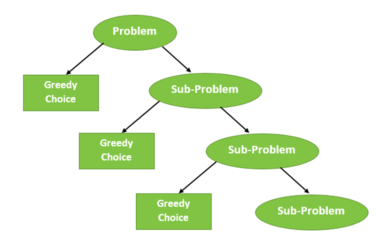LeetCode has become one of the most popular online platforms for practicing coding problems, preparing for technical interviews, and sharpening problem-solving skills. Whether you’re a beginner looking to learn the basics or an experienced developer aiming to land your dream job, mastering LeetCode solutions can significantly boost your confidence and abilities.
In this blog, we’ll explore what LeetCode is, why it’s essential, common problem types, strategies to solve problems efficiently, and tips to improve your coding skills using LeetCode.
What is LeetCode?
LeetCode is an online coding platform that offers hundreds of algorithmic problems ranging from easy to hard levels. It covers various topics like arrays, strings, trees, dynamic programming, and more. The platform also supports multiple programming languages, allowing users to practice in their preferred language.
LeetCode is especially famous for its role in technical interview preparation at top tech companies like Google, Facebook, Amazon, and Microsoft. Many interview questions are inspired by or directly taken from LeetCode problems.
Why Practice LeetCode Solutions?
1. Improve Problem-Solving Skills
LeetCode challenges push you to think critically and approach problems logically. Practicing regularly enhances your algorithmic thinking and helps you develop systematic problem-solving strategies.
2. Prepare for Coding Interviews
Most tech companies ask algorithmic questions similar to LeetCode problems during interviews. Familiarity with these questions improves your chances of success.
3. Understand Data Structures and Algorithms
LeetCode problems cover fundamental data structures (like linked lists, stacks, queues) and algorithms (such as sorting, searching, recursion). This knowledge is crucial for any software engineer.
4. Build Confidence and Speed
Consistent practice helps you write clean, efficient code quickly—a vital skill during timed coding interviews.
Common Types of LeetCode Problems
LeetCode problems are grouped into categories based on the concepts they test. Some popular types include:
- Arrays and Strings: Manipulating sequences of data, finding patterns, sorting, and searching.
- Linked Lists: Handling nodes and pointers to perform operations like reversal, merging, and cycle detection.
- Trees and Graphs: Traversal, searching, and pathfinding in hierarchical or connected data.
- Dynamic Programming: Breaking down complex problems into simpler overlapping subproblems.
- Backtracking: Exploring all possible solutions to find valid answers (e.g., permutations, combinations).
- Sorting and Searching: Efficiently organizing or locating data within structures.
- Math and Bit Manipulation: Applying mathematical formulas and binary operations.
How to Approach LeetCode Problems Effectively
1. Understand the Problem
Read the problem carefully and clarify the input/output requirements. Identify constraints and edge cases.
2. Start with a Brute Force Solution
Don’t worry about optimization initially. Write a simple solution that works correctly, even if it’s not efficient.
3. Analyze Time and Space Complexity
Evaluate how your solution performs with larger inputs. This helps you identify bottlenecks.
4. Optimize Step-by-Step
Use techniques like hashing, two pointers, recursion, or dynamic programming to improve efficiency.
5. Test Thoroughly
Check your solution against all edge cases and large inputs to ensure correctness.
6. Read Editorials and Discuss
LeetCode provides official editorials explaining solutions. Participating in discussion forums also helps you learn alternate approaches.
Example: Solving a Popular LeetCode Problem
Let’s walk through a classic problem: Two Sum
Problem: Given an array of integers and a target value, find two numbers that add up to the target and return their indices.
pythonCopyEditdef twoSum(nums, target):
hashmap = {}
for i, num in enumerate(nums):
complement = target - num
if complement in hashmap:
return [hashmap[complement], i]
hashmap[num] = i
Explanation:
- We use a hashmap (dictionary) to store each number’s index as we iterate.
- For each number, we check if the complement (target – current number) exists in the hashmap.
- If yes, we return the indices of the complement and current number.
- This approach runs in O(n) time and O(n) space.
Tips to Improve Your LeetCode Skills
- Practice Regularly: Consistency is key to mastering algorithms.
- Focus on One Topic at a Time: Master arrays before moving to trees, for example.
- Learn from Mistakes: Review incorrect submissions to understand where you went wrong.
- Use Multiple Languages: Try solving problems in different languages to improve versatility.
- Participate in Contests: LeetCode contests challenge you under time pressure and boost your problem-solving speed.
- Collaborate and Discuss: Join coding groups or forums to exchange ideas and solutions.
Final Thoughts
LeetCode is a powerful tool for anyone looking to improve their coding skills and prepare for technical interviews. The key is to approach problems methodically, learn from each solution, and keep challenging yourself with harder problems over time.
Remember, it’s not about memorizing answers but developing the ability to think critically and solve new problems efficiently.
Start your LeetCode journey today, and watch your programming skills soar!


